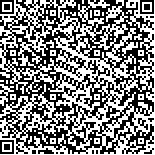| This article has been:Browse 1514Times Download 2624Times |

scan it! |
|
|
| DOI:10.13522/j.cnki.ggps.2021212 |
|
| Impact of Burying Depth of Emitters in Pit Irrigation on Water Infiltration in Red Soil |
|
LIAO Zhenqi, FAN Junliang, PEI Qingbao, et al.
|
|
1. College of Water Research and Architectural Engineering, Northwest A&F University, Yangling 712100, China;
2. College of Water conservancy and Ecological Engineering, Nanchang Institute of Technology, Nanchang 330099, China;
3. State Key Laboratory Base of Eco-hydraulic Engineering in Arid Area, Xi’an University of Technology, Xi’an 710048, China
|
| Abstract: |
| 【Objective】Irrigation pit is a technology to collect and store water for it to be used in irrigation. The objective of this paper is to study experimentally the impact of burying depth of emitters of subsurface irrigation in combination with a pit on water infiltration in red soil.【Method】The experiment was conducted indoors using soil tanks. The moving distance of the wetting front, cumulative infiltration and spatiotemporal distribution of soil water content under different irrigation amounts from 1 to 3 L, and emitter depths from 10 to 20 cm, were measured and calculated. We then modelled soil water movement in the tanks numerically based on the Richards’ equation, and fitted the infiltration process to different models.【Result】The infiltration rate increased with irrigation amount and decreased as the burying depth of the emitters increased. The infiltration rate declined as the time elapsed. In the first 540 min after onset of the experiment, the wetted area and the maximum moving distance of the wetting front increased with irrigation amount, thereby driving the water moving towards the bottom-right of the tanks. The maximum moving distance of the wetting front in the vertical direction was greater than that in the horizontal direction; the influence of irrigation amount on soil water content was greater than the impact of the emitter depth.【Conclusion】The Kostiakov model was more accurate than the Philip model to describe the water infiltration, and the numerical model can simulate spatiotemporal dynamics of the water in the soil tanks. |
| Key words: single pit irrigation; red soil; irrigation amount; emitter depth; infiltration; numerical simulation |
|
|